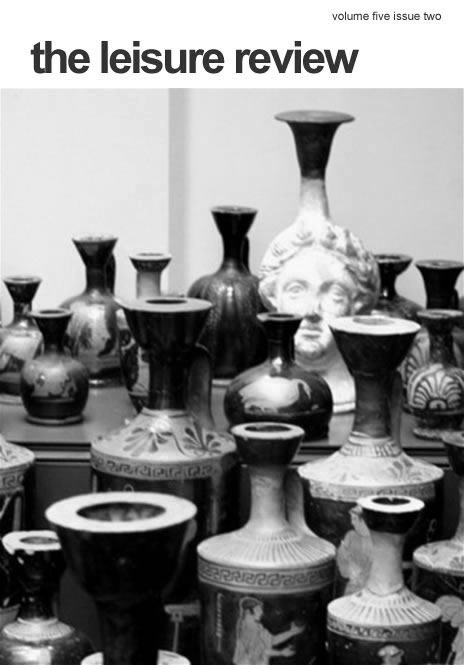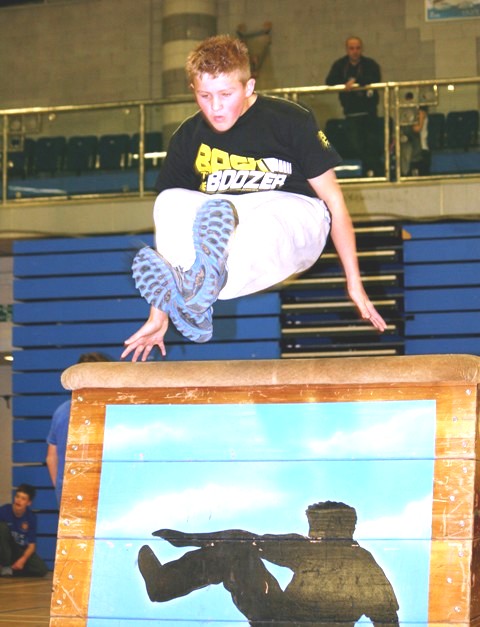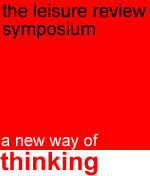The article published in the February issue of The Leisure Review [‘Parkour? Pourquoi Pas?] is on the whole a very positive piece about parkour and demonstrates the positive impact parkour can have. However, there are a number of issues relating to parkour as a sport, parkour’s coaching qualification structure and the relationship of parkour with gymnastics/acrobatics that might benefit from some clarification.
Whether parkour is a sport is perhaps the first question. As Parkour UK is a national governing body of sport (NGB) we refer to parkour as being a sport but it is not restricted to being just a sport; it is also, to quote the original article “a discipline, an art, a philosophy”. Our description of parkour is of parkour as a sport “parkour/freerunning/art du deplacement is the non-competitive physical discipline of training to move freely over and through any terrain using only the abilities of the body, principally through running, jumping, climbing… It is a sport that encourages self-improvement on all levels, revealing one’s physical and mental limits while simultaneously offering ways to overcome them… The sport aims to build confidence, determination, self-discipline and self-reliance, and responsibility for one’s actions. It encourages humility, respect for others and for one’s environment, self-expression, community spirit, and the importance of play, discovery and safety at all times.”
Parkour UK’s description of parkour is currently the subject of a consultation. This current description does not fully describe the art/discipline/philosophy of parkour as a whole.
However it is defined, parkour has a long history. In one sense parkour has existed for as long as we have walked on two legs and ever since we have moved either out of necessity, for enjoyment or for practice. It exists at the base of all human movement, and lives and breathes in part within all physical endeavours, from the play of children to the methodology of modern sports.
Links to parkour can be traced back to Georges Herbet, who, while in the French navy, was in the town of St Pierre in Martinique when it was hit by a volcanic eruption. Herbert co-ordinated the escape and rescue of 700 people in 1902. This experience had a profound effect on him and made him believe that athletic skill must be combined with courage. His athletic teaching became the standard of French military training. Raymond Belle was born in French Indo-china in 1939 and was taken in by the French army where he received the Herbert-influenced military training. He then went on to become an elite firefighter. His many rescues and medals gave him a reputation that inspired his son, David Belle, and his friends – the Yamakasi.
The sport, originally termed art du deplacement and now often referred to as parkour or freerunning, was founded in France in the 1980s by a group of nine young men who called themselves the Yamakasi. Yamakasi is a Lingala word loosely meaning ‘strong man, strong spirit’ and summed up the original and still core aim of parkour – to be a strong individual physically, mentally and ethically. The Yamakasi founders were David Belle, Yann Hnautra, Chau Belle, Laurent Piemontesi, Sebastain Foucan, Guylain N'Guba Boyeke, Charles Perriere, Malik Diouf and Williams Belle. The term ‘parkour’ was first introduced by David Belle in 1998 and derives from the French word parcours meaning ‘route’ or ‘course’ The term ‘freerunning’ was the creation of Guillaume Pelletier, a representative of a group of French practitioners involved in the production of a Channel 4 documentary, Jump London, in 2003. This term was used in order to communicate this amazing new sport to an English-speaking audience. Parkour UK has chosen to utilise the term ‘parkour’ to represent the sport.
Parkour UK has worked with the Flying High school sports partnership (SSP) over a number of years, supporting their programme development in addition to providing technical support and endorsing the parkour resource they have developed. Flying High have also had a number of staff go through the Parkour UK 1st4sport Level 1 Certificate in Coaching Parkour/Freerunning (NQF) and these staff are keen to work towards the Parkour UK 1st4sport Level 2 Award in Coaching Parkour/Freerunning (QCF) when it launches later this spring. It is also worth noting the role the Positive Futures team, along with LIFE CIC, played in developing parkour in the Flying High partnership area. The work undertaken by Flying High echoes the innovative work undertaken by the City of Westminster in since 2005, showcased in the documentary Jump Westminster.
On the subject of qualifications, we must acknowledge that, as a small NGB, Parkour UK has finite resources and consequently our website has not kept pace with the significant change that we have gone through, both as a sport and a governing body. The information currently on the website does not accurately reflect what is now in place for our coaching qualifications so the information below is to clarify the current position and provide the necessary context for the description of our qualifications, including why we refer to them as “our” qualifications.
In the eyes of the “qualification world” it is the awarding body (as with many other NGBs, 1st4sport Qualifications are Parkour UK’s awarding body) who is seen to own the qualification as they submit it to the appropriate qualifications framework, that is either the National Qualifications Framework (NQF) or the Qualifications and Credit Framework (QCF). 1st4sport Qualifications have partnership agreements with NGBs which recognise their significant contributions and involvement throughout the whole process. Documentation states that the qualification(s) have been developed in partnership with the appropriate NGB. 1st4sport also acknowledge that NGB resources, such as learning programmes and supporting materials, are owned by that NGB.
The 1st4sport Level 1 Certificate in Coaching Parkour/Freerunning (NQF) is awarded by 1st4sport Qualifications and has been developed in partnership with Parkour UK. The qualification is solely administered and awarded by 1st4sport Qualifications as the approved awarding body and is regulated onto the government’s National Qualifications Framework by the Office of Qualifications and Examinations Regulation (Ofqual). The 1st4sport Level 1 Award in Coaching Parkour/Freerunning (QCF) has been accepted by Ofqual and now sits on the Qualification and Credit Framework (QCF). This qualification will replace the current 1st4sport Level 1 Certificate in Coaching Parkour/Freerunning (NQF) and be available for centres (recognised by 1st4sport) to use from 1 April 2011. 1st4sport Qualifications is an awarding body recognised and regulated by the Office of Qualifications and Examinations Regulation (Ofqual) and created with the aim of offering vocational qualifications in areas of sport, recreation and allied occupations. Parkour UK is also working with both 1st4sport Qualifications and SportsCoach UK on achieving the UK Coaching Certificate (UKCC) endorsement for our Level 1 & 2 qualifications, which, it is hoped, will be achieved in 2011.
The pre-requisites for the both the current Level 1 and the new Level 1 Award in Coaching Parkour/Freerunning (QCF) are learners are at least 16 years of age, hold a valid first aid certificate (Parkour UK-approved, minimum of 3 hours) and have attended a SportsCoach UK child protection/safeguarding workshop. It is also recommended that some previous experience of the sport has been undertaken prior to registration of the qualification. However, this is not essential. Parkour UK will be making the necessary changes to our website to ensure our qualification is accurately described as set out above.
With regard to gymnastics/acrobatics, parkour is primarily about getting from one place to another and utilising only your own body and physical abilities. As such, gymnastic/acrobatic movements such as back-flips, twists and aerials, which serve mainly aesthetic purposes, are not fundamental to parkour. When practitioners begin to move onto the more difficult jumps and movements it is simply impractical to involve acrobatics, as just completing such jumps safely will require all of their focus.
Gymnastics/acrobatics are, of course, an entirely separate activity in their own right and have been practiced much longer than the sport of parkour. It is often (wrongly) assumed that simply practising acrobatic techniques outdoors means that you are doing parkour but there have always been obvious transferable skills between these, as well as other, sports. If practitioners find acrobatic elements assist in mastering their own movement or provide a means of expression and exploration of their own creativity it is recommended that practitioners seek the instruction of an appropriately qualified British Gymnastics 1st4sport coach and study that sport as they would parkour. Parkour UK has had productive dialogue with British Gymnastics over the last two years and we will continue this dialogue. We aim to work closely with British Gymnastics now and in the future, especially on coaching qualifications.
Eugene Minogue is the chief executive of Parkour UK.
Find Parkour UK online at www.parkouruk.org
The Leisure Review, March 2011
© Copyright of all material on this site is retained by The Leisure Review or the individual contributors where stated. Contact The Leisure Review for details.
Download a pdf version of this article for printing


